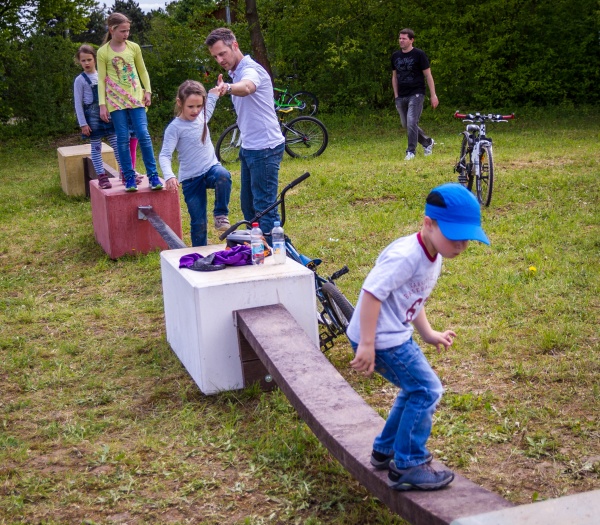Inspect First - Then Refurbish
In recent years, the number of artificial pitches used to practise sports has continued to increase, largely replacing old surfaces such as ...


YOUR FORUM FOR PLAY, SPORTS UND LEISURE AREAS

"Feel free" is how you could describe the feeling that slacklining evokes. Perceived freedom of movement through fitness, body control and directly experienced self-efficacy.
Slackline facilities installed in urban spaces – "slackline parks" – have numerous positive effects on urban society. Slacklining involves much more than balancing on a wobbly line. The central, overarching idea is to encourage an entire society to engage in physical activity Slacklining can help everyone achieve better balance, basic fitness and a better posture, which is a great asset for a healthy society. Slacklining is suitable for almost everyone - but so far not accessible to everyone!
Benefits of slackline parks for users
Just like any other sport, slacklining requires an infrastructure - the anchor points for the slacklines.
Usually, trees were used for this purpose. This is still necessary for some disciplines of this sport, and with the right protective material and knowledge of the proper anchoring, it is also possible to affix slacklines to most trees on a temporary basis.
Ever since slacklining has become increasingly popular in recent years, many conflicts have arisen between the various interest groups, leading to a complete ban on the use of trees in some cities, as trees are not only of non-material but also of great monetary value to society.
This resulted in the development of technical solutions that allow for the continued or additional provision of anchor points for athletes, and the development of slackline parks in urban areas. This article focuses on this infrastructure of anchor points for urban open space. In addition, there are other solutions for anchor points in sports halls, swimming pools and leisure facilities.
These outdoor anchor points should be designed differently depending on their intended use:
For some of these uses there are currently no technical solutions available, which is why they will not be discussed in more detail here; e.g. midlines and highlines require mountains, canyons or high-rise buildings.
Furthermore, the anchor points can be subdivided depending on the duration of use:
Mobile and temporary solutions for outdoor and indoor use will not be discussed in detail either, as they are only suitable for permanent use in urban areas to a very limited extent, e.g. in the context of events or as a temporary extension of existing facilities.
The urban slacklining infrastructure can thus be divided into the following categories:
Balance equipment
Balance equipment in playgrounds and outdoor fitness facilities that is based on slacklining. It is a great way for people to practise improving their balance, but cannot be compared to slacklining. Even with beginner lines, slacklining allows for a wider variety of movements due to the unique nature of the slackline webbing.
Permanently usable systems
Permanently installed and usable slackline systems provide low-threshold opportunities for everyone to experience the fascination of slacklining in urban areas without having to bring their own equipment.
Post systems
The post systems can be divided into the different user groups and their requirements for the anchor points:
Slackline park layout:
Municipalities wishing to embrace the idea of slacklining will find expert support from local slackline associations, the German Slackline Association (Deutscher Slackline Verband e.V.) and the International Slackline Association. These associations can also recommend specialist companies and support municipal planners and designers in finding the right solution for the individual user groups.